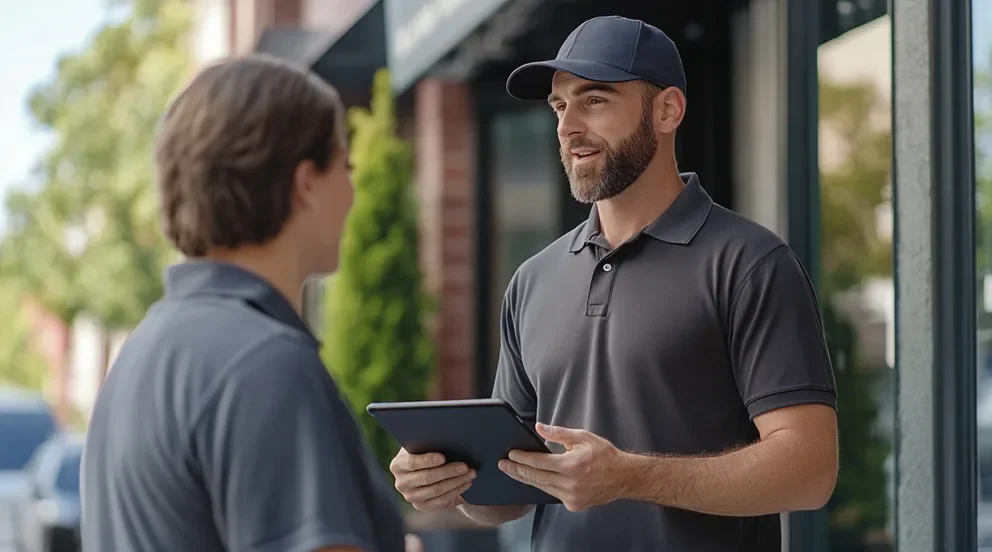Software for Dispatching is a type of software that helps organizations manage their dispatching operations. It is used in a variety of industries, including transportation, logistics, delivery, and emergency services. The software is designed to streamline operations by automating and organizing tasks associated with dispatching.
At its core, software for dispatching provides users with the ability to manage and assign jobs to personnel, track the location of personnel and vehicles, and provide real-time updates on job progress. It also helps organizations manage their resources more effectively. By providing up-to-date information on personnel and vehicle availability, organizations can better plan routes and scheduling, ensuring that orders are fulfilled in a timely manner.
Additionally, software for dispatching typically includes features for tracking and managing customer information, such as contact details, order history, and delivery preferences. This helps organizations improve customer service by providing quick and accurate responses to inquiries and orders.
Software for dispatching also often includes analytics and reporting capabilities, which allow organizations to gain insights into their operations and improve their efficiency. By tracking and analyzing data such as job completion times, customer feedback, and vehicle usage, organizations can identify areas for improvement and make informed decisions.
In short, software for dispatching is an invaluable tool for organizations looking to streamline their dispatching operations and improve their customer service. From tracking personnel and vehicles to managing customer information, software for dispatching provides users with a comprehensive solution for managing their dispatching needs.
What are the key features of Software For Dispatching?
Software for dispatching offers a range of features designed to streamline dispatching operations. The key features include:
• Automated job assignment: Software for dispatching enables users to assign and manage jobs quickly and efficiently.
• Real-time updates: Software for dispatching provides up-to-date information on job progress and personnel and vehicle location.
• Resource management: Software for dispatching helps organizations better manage their resources, such as personnel and vehicles, by providing up-to-date information on availability.
• Customer information management: Software for dispatching includes features for managing customer information, such as contact details, order history, and delivery preferences.
• Analytics and reporting: Software for dispatching typically includes analytics and reporting capabilities, which allow organizations to gain insights into their operations and improve their efficiency.
• Customization: Software for dispatching can be customized to meet the specific needs of an organization.
By providing these features, software for dispatching helps organizations streamline their operations, increase efficiency, and improve customer service.
What are the benefits of using Software for Dispatching operations?
Software for dispatching provides a range of benefits to organizations looking to streamline their operations and improve their customer service. The main benefits include:
• Increased efficiency: By automating and organizing tasks associated with dispatching, software for dispatching helps organizations streamline their operations and increase efficiency.
• Improved customer service: Software for dispatching provides up-to-date information on job progress, customer information, and vehicle availability, allowing organizations to respond quickly to inquiries and orders.
• Better resource management: By providing real-time information on personnel and vehicle availability, software for dispatching helps organizations better plan routes and schedules, ensuring orders are fulfilled in a timely manner.
• Analytics and reporting: Software for dispatching includes analytics and reporting capabilities, allowing organizations to gain insights into their operations and identify areas for improvement.
By utilizing software for dispatching, organizations can improve their operations and provide better customer service.
What types of industries use software for dispatching?
Software for dispatching is used in a variety of industries, including transportation, logistics, delivery services, and construction. In the transportation industry, software for dispatching helps organizations better manage their fleet of vehicles and personnel by providing real-time information on vehicle availability and job progress. In the logistics industry, software for dispatching helps organizations track orders and deliveries from start to finish. Delivery services use software for dispatching to manage customer information and ensure orders are fulfilled on time. Finally, construction companies use software for dispatching to manage job assignments and labor resources.
No matter the industry, software for dispatching provides organizations with a comprehensive solution for managing their operations efficiently and improving customer service.
What are the advantages of software for dispatching over manual dispatching?
Software for dispatching offers several advantages over manual dispatching. The main advantages include:
• Increased accuracy: Software for dispatching eliminates the need for manual data entry, which helps reduce errors and improve accuracy.
• Real-time updates: Software for dispatching provides real-time information on job progress and personnel and vehicle availability, allowing organizations to quickly respond to customer inquiries or orders.
• Analytics and reporting: Software for dispatching includes analytics and reporting capabilities, helping organizations identify areas of improvement within their operations.
• Automation: By automating common tasks associated with dispatching, software for dispatching can help save time and increase efficiency.
Overall, software for dispatching offers significant advantages over manual dispatching, helping organizations streamline their operations and improve customer service.
What are the security considerations for software for dispatching?
Software for dispatching is generally secure, but there are a few security considerations to keep in mind. These include:
• Encryption: Ensure that the software for dispatching encrypts all data transmitted from one point to another. This will protect customer and employee information from unauthorized access or manipulation.
• Authentication: Make sure the software for dispatching has authentication features such as multi-factor authentication or single sign-on (SSO). This will help ensure only authorized users can access the system.
• Regular updates: Ensure that the software for dispatching is regularly updated with new security patches and feature updates, as this helps reduce the risk of malicious attacks.
By following these security considerations, organizations can ensure their software for dispatching is secure and protected from potential exploitation.
Are there any special requirements for software for dispatching?
Yes, there are a few special requirements for software for dispatching. These include:
• Compatibility: Ensure that the software is compatible with the organization’s existing hardware and software systems.
• Training: Make sure there is adequate training available to ensure personnel can use the software effectively.
• Support: It’s important to have access to customer support in case technical issues arise when using the software.
By taking these requirements into consideration, organizations can choose the best software for dispatching and have confidence it will meet their needs.
What types of analytics and reporting capabilities are included in the software for dispatching?
Software for dispatching typically includes analytics and reporting capabilities that can help organizations gain insights into their operations. These include:
• Job tracking: Reports on the current and historical status of jobs, including job completion time, location, vehicle type, etc.
• Activity reports: Visualizations of employee activities to identify areas where efficiency can be improved.
• Performance monitoring: Reports showing progress against performance goals such as customer satisfaction or delivery times.
• Scheduling timeline: Report showing when tasks are scheduled throughout the day or week to better manage resources and optimize workflow.
Overall, software for dispatching provides a range of valuable analytics and reporting capabilities that can help organizations streamline their operations and improve customer service.
Are there any customization options available for software for dispatching?
Yes, most software for dispatching includes customization options that allow users to tailor the system to their business requirements. These include:
• Customizable user interfaces: Many software solutions offer customizable user interfaces so they can be tailored to fit different types of businesses and workflows.
• Custom reporting and analytics: Organizations can customize reports and analytics to better identify areas of improvement within their operations.
• Automation rules: Automation rules can be customized to automate common tasks associated with dispatching, helping save time and increase efficiency.
By taking advantage of these customization options, organizations can ensure their software for dispatching meets their specific needs.



